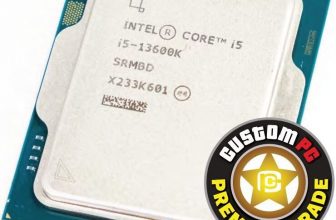AMD Ryzen 5 1600X Review
Taking AMD’s new hexa-core hotness for a spin.
When AMD pulled the wraps off its radical new Ryzen CPU, it was all about those eight awesome cores. Count ’em, Intel. The first Ryzen 7 chips blew the market for CPUs wide open.
But not everybody can unload that kind of money on a processor, especially a brand new design that also requires a motherboard upgrade. Enter the Ryzen 5 1600X. On paper, it might just be the ultimate balancing act between performance bang and efficient deployment of your hard-earned buck.
The 1600X packs six cores and supports 12 threads, while a similarly priced Intel processor, the Core i5-7600K, has four cores and just four threads. And as a consequence of being the top six-core model, it also clocks in at 3.6GHz nominal and 4.0GHz turbo. It looks like a very nicely balanced chip. It’s the mid-range CPU that we’ve all been waiting for, right? For the most part, yes.
When it comes to outright multithreaded performance, it pops a cap in the head of the Intel Core i5. The Core i5-7600K manages 663 in Cinebench. The Ryzen 1600X? A massive 1,223 points, nearly double the Core i5’s capability.
Admittedly, the Core i5 retains some dignity in the single-threaded version of Cinebench, with 179 points compared to the 1600X’s 159 points. However, the AMD chip looks like the better trade-off at first glance.
Elsewhere, if the results aren’t quite so spectacular, AMD still chalks up some decent wins. It crunches high-quality video encoding at 22fps to the i5’s 16fps, and it motors through the Fry Render benchmark in just 3 minutes and 46 seconds — two minutes faster than the 7600K.
If you want a CPU for content creation or any workload that majors on parallelism, this isn’t a race.
The Intel competition is hideously, hopelessly outclassed. That’s true even taking into account the fact that the Ryzen CPU is a little more power-hungry. An extra 10 watts at the wall is surely worth it.
Where the Ryzen is a little less compelling is in the games arena. When it comes to average frame rates, the 1600X delivers on that 4GHz promise. The subjective experience, however, tells a slightly different story.
Total War: Attila is a great case study. Running on the Intel processor, it’s supersmooth, whether you’re up in the sky, lording it over your troops, or down in the thick of the action. But with the Ryzen CPU at the same settings and using the same video card, there’s juddering almost everywhere.
There are a few reasons why. We used an Nvidia GPU, and there are at least indications that the Nvidia driver is poorly optimized for Ryzens. There are also question marks surrounding Ryzen’s basic architecture, which is composed of a pair of quad-core modules. Some latency is involved in communicating between the two quad-core modules, and that can require careful management by both OS and application to avoid performance penalties.
Ryzen is brand new, so most software has yet to be tweaked to take account of such issues. Of course, most software runs OK without any modifications.
On a final note, like other Ryzen processors, the 1600X has pretty much zero overclocking headroom.
AMD has these things running pretty ragged.
An additional 100MHz was the best we could achieve.
Jeremy Laird
Verdict
The six-core design makes this an appealing choice in some circumstances, but this is not for gamers (yet).
Rating 4/5
When you purchase through links on our site, I may earn an affiliate commission. Here’s how it works.







